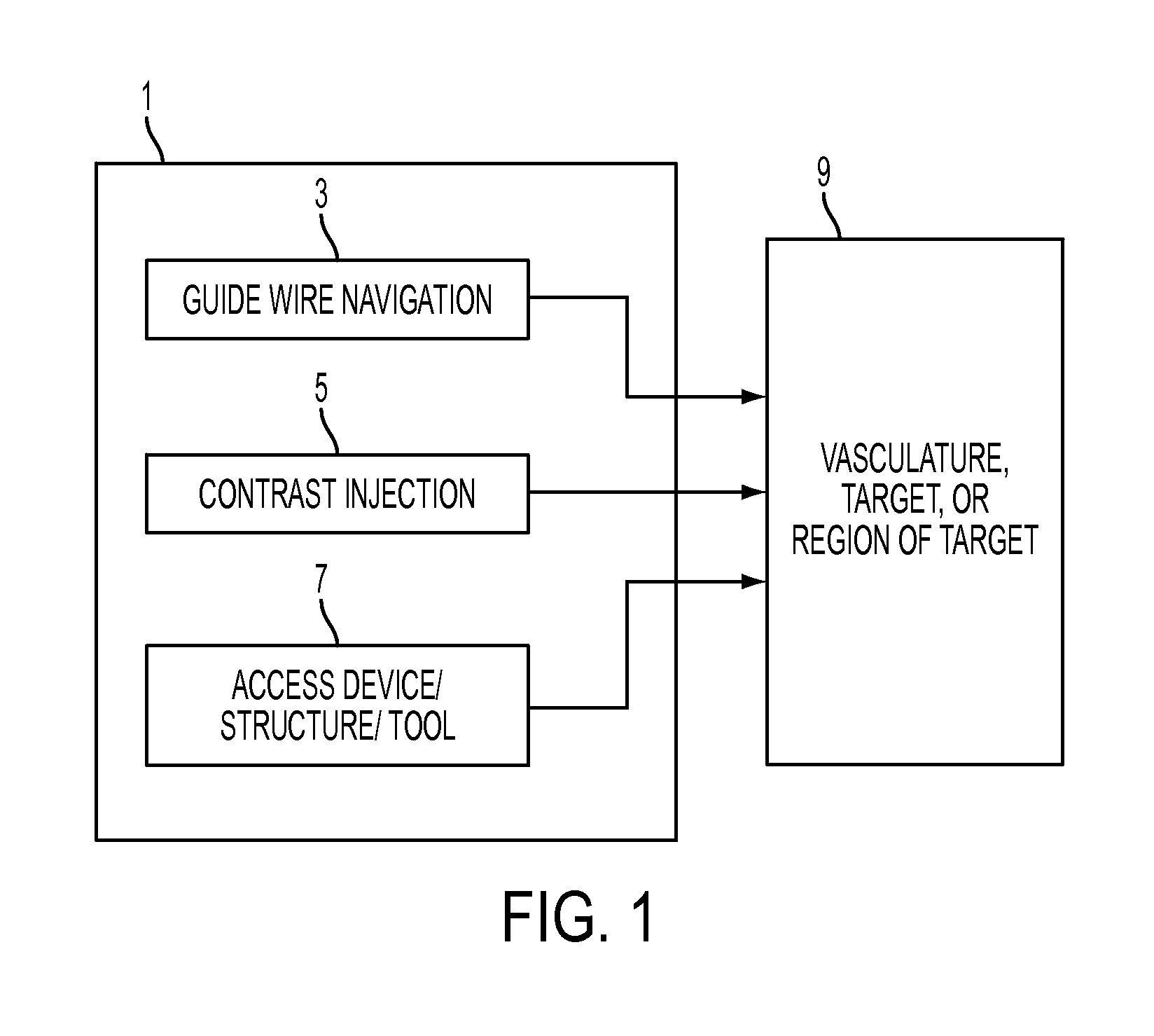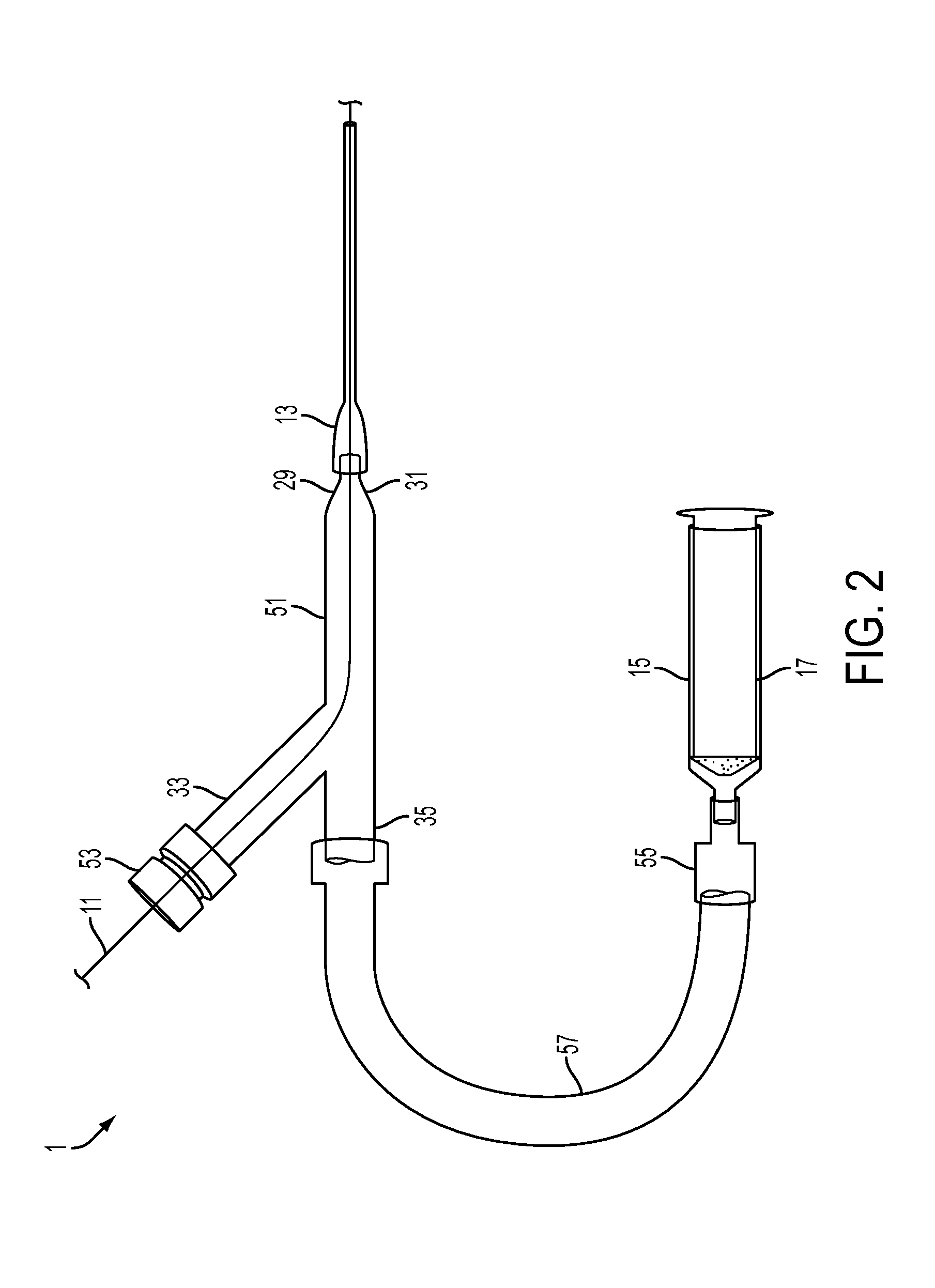Access system for femoral vasculature catheterization and related method
a technology for accessing systems and vasculature, which is applied in the field of medical devices, can solve problems such as significant morbidity, significant morbidity, and inconvenient use of catheters, and achieve the effects of preventing damage to the vasculature, rapid and easy attachmen
- Summary
- Abstract
- Description
- Claims
- Application Information
AI Technical Summary
Benefits of technology
Problems solved by technology
Method used
Image
Examples
example set no.67
Example Set No. 67
[0190]An aspect of an embodiment of the present invention solves the clinical need to improve the method used to obtain femoral access and precisely guide the operator to puncture the common femoral artery. This device and methodology allows the operator to locate the initial puncture site using fluoroscopically defined bony landmarks (e.g., middle of the femoral head) followed by puncture of the artery with a small, 21 gauge needle while allowing the operator to confirm the location within the common femoral artery by injecting contrast under fluoroscopy. If the operator confirms the proper site in the common femoral artery, a small guide wire can then be advanced through a channel installed in the plunger of the contrast-delivery syringe, into the barrel of the syringe, and then out the distal tip of the needle. Thereafter, the needle and syringe can be removed and replaced by a sheath. However, if the angiogram demonstrates improper position, the needle can be w...
PUM
 Login to View More
Login to View More Abstract
Description
Claims
Application Information
 Login to View More
Login to View More - R&D
- Intellectual Property
- Life Sciences
- Materials
- Tech Scout
- Unparalleled Data Quality
- Higher Quality Content
- 60% Fewer Hallucinations
Browse by: Latest US Patents, China's latest patents, Technical Efficacy Thesaurus, Application Domain, Technology Topic, Popular Technical Reports.
© 2025 PatSnap. All rights reserved.Legal|Privacy policy|Modern Slavery Act Transparency Statement|Sitemap|About US| Contact US: help@patsnap.com



